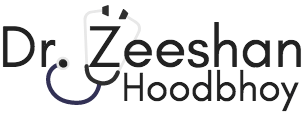Cardiovascular health is critical for everyone, especially for older individuals. Roughly 735,000 Americans suffer heart attacks every year, with about 120,000 of those being fatal. In order to best prevent these coronary issues, early diagnosis and effective treatment is crucial.
Regular doctor visits should be a part of your regimen in order to address any health issues that may exist, or may be growing. Cardiovascular tests should be done by your doctor ideally every physical to detect risks of a heart attack. Have your blood pressure, pulse, and temperature checked as well, as these are all factors that can determine whether or not you have had, or will have a heart attack in the near future.
A few common tests performed to check signs and symptoms include electrocardiograms, blood tests, x-rays, and stress tests.
- Electrocardiogram – This is done by attaching electrodes to the skin to monitor the heart’s electrical activity. The impulses are recorded on paper, or through waves displayed on a screen. Injured heart muscle does not conduct electrical impulses, so no signs of activity could mean a heart attack has occurred or is about to.
- Blood Tests – These are done to test the levels of enzymes present in one’s blood. If the heart is damaged, certain types of enzymes are able to leak out into the bloodstream.
- X-Rays – Chest x-rays are often performed to monitor the size of one’s heart. They are also effective for reading blood vessel sizes and to detect any fluid in the lungs.
- Stress Tests – These are done in the days or weeks following a heart attack. Exercise stress tests can accurately measure how your heart and blood vessels respond to physical exertion. The cardiovascular exercises performed include walking or lightly jogging on a treadmill or riding a stationary bike. Some tests are even done by giving IV medication that stimulates the heartbeat.
Treatment following a heart attack is extremely important, as the longer damaged heart tissue goes without being corrected, the more oxygen is lost, eventually leading to the deterioration of those muscles. There are several medications a patient can take, including aspirin, thrombolytics, beta blockers, and other pain relievers. These can thin the blood to reduce clotting and maintain flow.
In extreme cases, surgery may be required. Common procedures include stenting and coronary angioplasty, or coronary artery bypass surgery.
- Coronary Angioplasty and Stenting – This is when a long catheter is passed through an artery in your lower body to a blocked artery towards your heart. A surgical balloon on the end of this is inflated to open that affected artery.
- Coronary Artery Bypass Surgery – This procedure involves the sewing of veins in place to block a narrowed coronary artery, which allows blood to reach the heart and bypass the blocked vein. This is typically recommended either immediately following a heart attack, or after 3-7 days depending on the severity.
It’s important to protect yourself from any cardiovascular complications at all times. To preserve your heart health, be sure to avoid smoking, exercise weekly at the least, maintain a healthy diet, and have regular checkups with your doctor.

